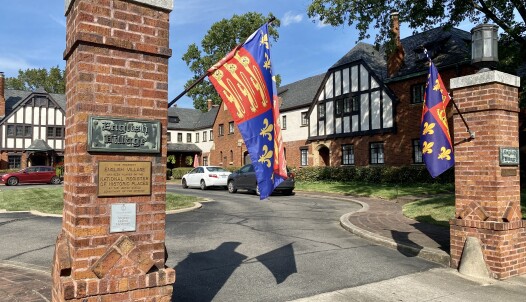Over the centuries, a number of well-known architects have called Richmond home. As a result, the city is full of iconic structures — funny how that works.
We’re sharing the stories of three architects from Richmond’s history, and one of their buildings that may have made you stop and stare.
Ethel Bailey Furman
Born in Richmond on July 6, 1893, Ethel Bailey Furman would become the first known African American woman to work as an architect in Virginia.
Furman’s father, Madison Jefferson Bailey, was one of the first licensed Black contractors in the city. As a child, she would accompany him to projects, and as she grew older that love of buildings and design led to her work designing churches, homes, and more.
One of Furman’s most notable works was the education wing of Fourth Baptist Church in Church Hill. The building’s striking style demonstrates Furman’s taste for 20th century modern design.
D. Wiley Anderson
D. Wiley Anderson was a turn-of-the-century architect who designed a significant number of buildings around the Richmond area — several of which have since wound up on the National Register of Historic Places.
One of those historic places is the Benswanger House on Monument Avenue. The ornate, regal-looking house features wide open rooms and ornate decorations including stained glass windows.
Built in 1915, the Benswanger House last sold in 2016 for $1.7 million.
Bascom Joseph Rowlett
Another architect of the early 20th century, Bascom Joseph Rowlett was born in Richmond and graduated from Richmond High School in 1906. Rowlett’s father worked at Tredegar Ironworks.
After receiving a degree from Virginia Mechanics Institute, Rowlett started working in the city as an architect. He would go on to design a number of works, one of his most notable being the English Village in the Museum District. An icon of Richmond’s Tudor Revival phase, the English Village is still eye-catching even today.
W. Duncan Lee
W. Duncan Lee remains one of the most iconic architects in Richmond’s history. Born in Ashland and educated in Richmond, Lee opened his own firm in the city in 1910. Over the next few decades, he would go on to design houses in some of the city’s most notable neighborhoods, including the Fan, Westmoreland Place, and on Monument Avenue.
One of Lee’s works, a 12,500-sqft mansion on Cary Street Road, was the most expensive home sold in Richmond in August 2024. It was purchased for $9 million after two months on the market. At the time, that was also the city’s highest-dollar home sale of the year.
The home was built by Lee in 1916 and expanded a century later. Designed in the Colonial Revival style, the sprawling floor plan includes a garden room with an original bar, a library, and even a fountain.
Do you have a favorite historic building around town that you want to learn the history of? Point it out to us and we might look into it in a future newsletter.













